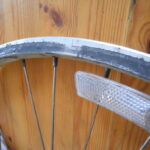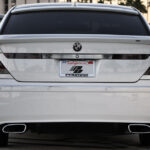Japanese vs European Cars Comparison (Reliability, Price, etc.)
In the automotive world, it’s argued there are two places in the world that make the best cars: Japan and Europe. For decades they’ve gone toe-to-toe, particularly on Europe’s home soil as Japanese imports have spent many years flooding into the market
. However, which side has made the overall best impression, has the west cracked it best, or has the east figured it out far better?
Which Cars are Better- Japanese or European?
In the past, it would have been a fairly easy victory for the Japanese. European cars used to be a very risky bunch, suffering from sub-par engineering, terrible rust, constant mechanical failure, and generally low quality. When Japanese imports started arriving, there was a bit of culture shock at how they could keep going without fault.
They weren’t the most stylish of cars, but the truth was hardly any European manufacturer could hold a candle to the invasive cars from the east. Eventually, however, Europe’s carmakers got their act together and in the present, the landscape has changed significantly.
Many cars in Europe are now as reliable as any Japanese car with motorists rating them highly. Specific companies, like Peugeot and Skoda, have seen massive praise for their trouble-free, high-quality vehicles.
Do European Cars Break Down More Often than Japanese?
Today, a European car will prove very sturdy, similarly so as any Japanese car, but in the past. it was a very different story. Whether it was an Austin, a Renault, an Alfa Romeo, you just weren’t promised something that could start up and drive off without incident. When the likes of Toyota, Honda, and Datsun started coming over, people were introduced to more resilient vehicles.
Today, people enjoy cars from both locations that can be depended upon. So much so, that there’s not much difference, though a few brands on Europe’s end still suffer from mechanical issues the Japanese just don’t have. Land Rover and Jaguar are some of the biggest offenders here.
Read it: 20 Really Important Questions about Japanese Cars
Performance: Japan vs Europe
In terms of power, this is where Europe beats out Japan. The most powerful car engines have come out of the continent as well as the fastest production cars. Although Japan has enjoyed a very large performance car market involving sports cars, sports saloons, and hot hatches, their outright power hasn’t been as great.
For the average, everyday type of car though, performance on both sides is very, very similar. A Honda Civic won’t have much difference to a Volkswagen Golf aside from utilizing differently thought out engines
Are Japanese Cars Cheaper than European?
In general, Japanese cars are cheaper than European. Small Japanese manufacturers like Suzuki and Nissan offer very low-cost cars, but, in the end, it’s eastern Europe’s contributions that win. Lada and Dacia sell some of the cheapest new cars money can buy, significantly undercutting any competition.
Not only is there a price difference, but running costs have a part to play as well. The average Japanese car now is excellently efficient, class-leading even, but, for a long time, fuel mileage wasn’t its strong suit. Volkswagen and Ford’s European division led the way for incredible fuel economy, while even the biggest heavy hitters like Honda and Toyota would take time to create similarly conservative fuel use.
Depreciation: Which Cars Depreciate More?
Although Europe boasts many cars that hold their value, there is still a lot that sees their depreciation drop like a stone. Luxury cars in particular will see their worth plummet, something the Japanese don’t really make a lot of.
This brings us to one of the biggest driving forces behind depreciation: perception of the brand. Seeing how brands like Honda and Toyota have built an enormous reputation for making cars that are exceptionally long-lasting, people will be happy to pay even for a used one, thus driving up the resale value.
Trending Video: How to Easily Bring Back to Life any Old Car Battery and Save Tons of Money (click to watch)
Are European Cars More Luxurious than Japanese?
While Japan has made plenty of high-end cars that don’t skimp on the quality, Europe has made even greater strides in creating the most comfortable cars. The great luxury brands like Rolls Royce, Bentley, and Mercedes practically helped invent the luxury car market.
Japan does have its own premium names (Lexus and Infiniti come to mind), but their pursuits in the luxury market are only recent and have yet to fully equal the Germans, British, and Italians for high-end cars. For the most part, their carmakers are more attuned towards products that suit the average motorist’s budget and not those intending to spend big money on something posher.
The bright side is that those cars suiting the average motorist are typically well equipped and built solidly both inside and out. Of course, comparable European cars can say the same.
Read it: Why is Lexus Expensive Though it’s Made by Toyota?
Do Japanese Cars Rust More Often?
Not these days (although there can be the odd recall over parts rusting), but in the past, Japanese cars did have an issue. Old imports back in the day didn’t have the rust protection that was needed for varied European climates as opposed to the less changeable Japanese weather. Fortunately, the manufacturers learned their lesson, better understood the necessary precautionary measures, and even set up factories in Europe itself.
However, it can’t really be said cars in Europe were any better at the time. Italian cars, in particular, were notorious for rusting away and French and the British motors weren’t exactly invincible to oxidizing. Fortunately, like the Japanese, they too have gotten more of a handle on parts rusting.
Which Cars Look Better? European or Japanese?
The answer is difficult, seeing how subjective the topic is and so depends on opinion. Generally, Europe has many beloved designs that have captured the hearts and minds of car enthusiasts the world over. The likes of the Lamborghini Countach, the Ferrari F40, the Citroen DS, and the Jaguar E-Type are just a small few of the many great beauties to come out of Europe.
Japan, meanwhile, has had a habit of making some very dull-looking offerings. The Nissan Bluebird, Honda Civic, and Toyota Corolla of old did not enjoy the same lively styling, but like Europe’s move towards more durable cars, Japan has made visual strides.
Recent additions, such as the Nissan GT-R, Mazda 3, and the latest Corolla have made it clear the Japanese are switching tactics and focus on creating more eye-catching designs.
Do European Cars Have Better Quality?
Like reliability, European cars lacked the build quality found in their Japanese rivals. The particular period between the 60s and 80s was where the east had a very clear advantage. Only the likes of Volvo, Mercedes, Saab and Ford could offer similar long-lasting usability.
Speaking on the current status quo though tells a different story. Many, if not all, of Europe’s carmakers, produce well-made cars that can stand shoulder-to-shoulder with Japan’s own.
Read it: Do Mitsubishi Last Long? (and Costs of Maintenance)
Which Cars Last Longer?
Not long ago, this answer would simply be the Japanese and that would be the end of it, but it’s not so easy these days. European manufacturers have spent the 21st century developing much greater lifespans for their cars and the results speak for themselves.
Surveys are now putting European brands high on the list and while Toyota, Lexus, and Mitsubishi prove fierce competitors, the difference is hardly noticeable.
Safety: Japanese or European Cars?
While Japan makes a lot of very safe cars, Europe has been the greater pioneer in improving automotive safety. Volvo and Mercedes specifically have been responsible for many innovations we normally take for granted. As for current cars, both sides have well-regarded safety with Europe just slightly edging Japan out.
Even today, Volvo continues to push the boundaries of how safe cars can be with several fellow European brands following suit in their quest to gain that prestigious five-star safety rating from Euro NCAP.
Conclusion
I hope you found this guide useful and have gained a better understanding of a difficult debate. Learning whether European cars are superior to Japanese cars or vice versa does not have any easy answers. Both exhibit such similar reliability now with build quality also hardly separating them.
Europe does have the lead in performance and design, seeing how their fast car market is so much larger and goes back far more years. In fairness though, Japan has created many terrific-looking machines, but the likes of Britain, France, and Italy have produced a vast amount of the most beautiful cars ever.
Both sides have also left their rust-riddled past behind them, though in terms of value, the Europeans remain top dog in offering the cheapest sets of wheels. The Japanese have the consolation of lower depreciation, but several German brands have enjoyed this as well.
In a way, perhaps the Europeans have improved to the point of surpassing the Japanese cars that once eclipsed them. Although with the margins being so ridiculously close now, it’s hard to notice. Regardless, either location is near-guaranteed of the best of the best in the automotive world.






